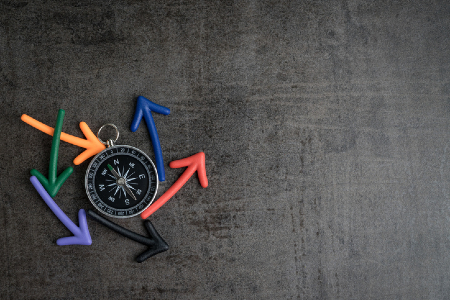How to Measure Improvement When Things Keep Changing
by Stacey BarrThere are three keys to measure and improve performance, when what you’re trying to measure keeps changing.

We need a certain amount of stability in order to get an improvement in something. If the world was pure chaos, there’d be no point trying. And if the world was pure certainty, there’d be no need. But our world is
somewhere in-between. And this means that performance is a state we might not be able to control, but we absolutely can improve.
There will always be instability. The instability that makes it feel like things keep changing is impacted by three common factors:
- our actions
- our direction (or intention)
- our environment
How we go about improving performance is governed by how we respond to the instability caused by these factors.
If actions keep changing, focus on isolation.
Tampering is a hard habit to curb in any organisation. Tampering is when we take action anytime a data point is less than acceptable. It’s a cause of chaos in performance because all the little changes just add more complexity to the process that delivers the result we’re measuring and trying to improve. The more actions we take, the more rocks we’re throwing into the pond. The more rocks we throw, the more waves we make, and the choppier things get.
The cure for tampering is isolating our actions. Just like scientists do with experiments. For example, to improve the learning outcomes of students, schools might try new teaching methods, new learning materials, changes to the curriculum. Trying these changes whenever and
wherever will make it impossible to know which changes work and which aren’t worth keeping. But if each change was isolated, either in a specific time-frame or in a specific location, then compared with when or where the change was not implemented, we could know.
If direction keeps changing, focus on fundamentals.
If our strategic goals keep shifting, and leaders can’t seem to make up their minds on what matters most, we end up with chaos in performance because nothing gets attention long enough to be improved. Resources get pulled away from one initiative and given to the next good idea. Everything is started, but nothing finished.
The cure for a constantly changing direction is to put, and keep, at least some attention on the fundamentals. The fundamentals are the performance results that always matter. In education, it might be student engagement and the acquisition of the skills that matter most to function in and contribute to society. If the strategic direction won’t sit still long enough to measure it, make sure you’re at least measuring the fundamentals.
If environment keeps changing, focus on influence.
Does anyone really work in a business environment that doesn’t change? Markets change. Customers change. Products change. Policies and regulations change. Technology changes. It doesn’t stop. Yet it can be tempting to think that nothing is worth measuring because the changes in the business environment are outside of our control.
The cure for environmental instability is to forget about control and exercise influence instead. It means to accept the variation that comes from changes in our business environment, and aim to make improvements despite that variation. In education, every year’s students are different. Curriculum changes to align with social changes. Pedagogy changes as research reveals better ways to help students learn. Even though every year is different, it’s still about improving learning for more students, to increase influence over how they can contribute in good ways to society, continue to learn, and enjoy a more fulfilled life.
Play infinite games, not just finite games.
Rarely will we shift a performance measure all the way to its target in a single initiative. It will more likely be a series of initiatives, each one learning from the success and failure of the one before, until we have gained the knowledge and wisdom of how to excel in that performance result.
James Carse, author of Finite and Infinite Games, gives us a good model for understanding how we can improve performance when things keep changing:
“A finite game is played for the purpose of winning, an infinite game for the purpose of continuing the play.”
Finite games in performance improvement are the projects we implement to make a change in performance. The infinite game of performance matters more: it’s continuing the play of continual improvement in the result we ultimately want to excel at, by getting better at winning the right finite games.
To improve performance when everything keeps changing, first refocus on the unchanging result that still matters to improve.
[tweet this]
Connect with Stacey
Haven’t found what you’re looking for? Want more information? Fill out the form below and I’ll get in touch with you as soon as possible.
167 Eagle Street,
Brisbane Qld 4000,
Australia
ACN: 129953635
Director: Stacey Barr




